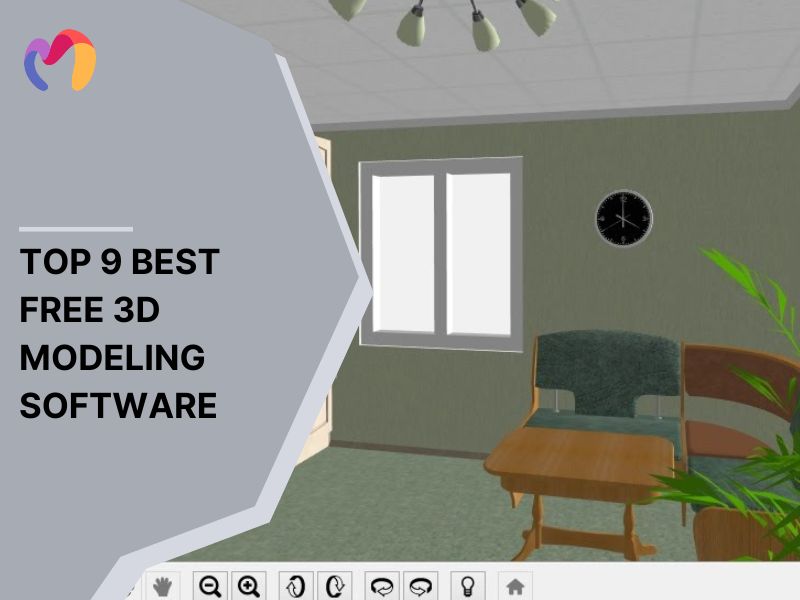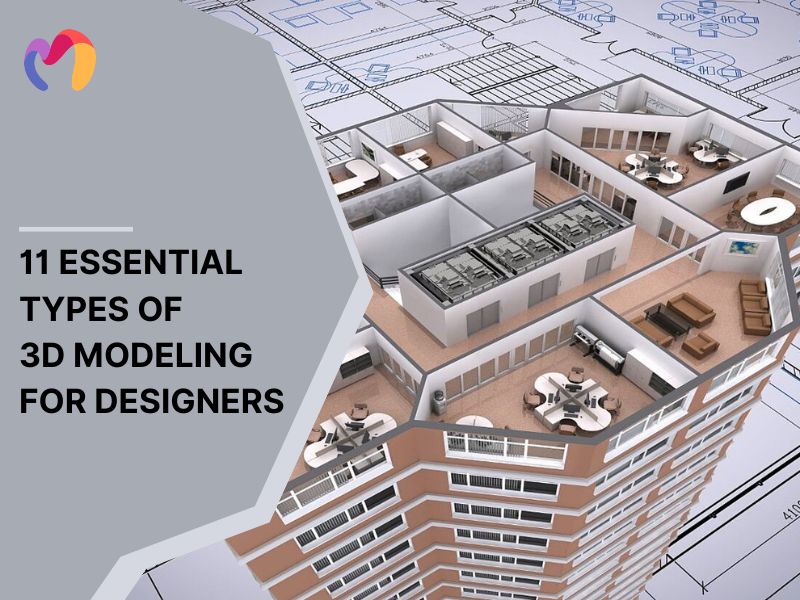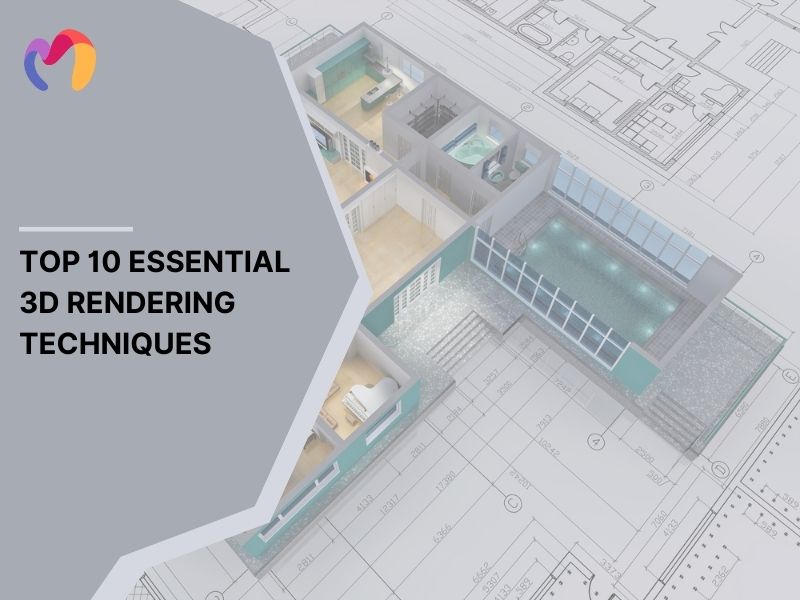What is PBR (Physically Based Rendering)? Everything you need to know
Physically based rendering is a method in computer graphics that mimics real-world optics to create lifelike lighting and material effects. By using physical laws, it helps designers produce images that look closer to photographs, which makes architectural, interior and exterior projects more convincing. This article explains what is PBR, its role in photorealistic rendering and practical ways to set up materials, adjust light and improve workflows. Readers such as architects, interior stylists and 3D artists will see how it supports realistic visuals, while also learning how 3DMAXTER’s professional model library offers ready-made assets with accurate surfaces and lighting to speed up design tasks and polish project presentations.
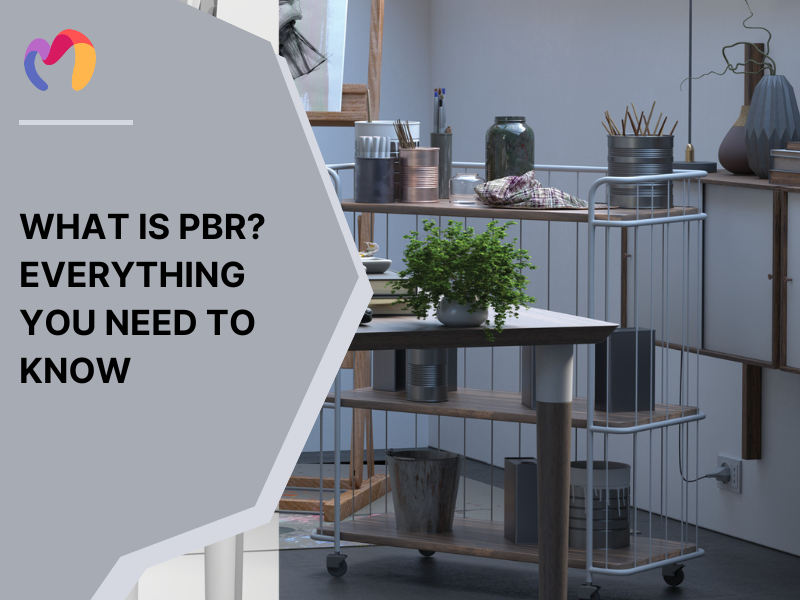
1. What Is PBR?
Physically based rendering (PBR) is a computer graphics method that uses real-world optics to simulate how light and surfaces interact, often called Physically Based Lighting or Physically Based Shading (Reference: Wikipedia). It appeared in the late 1980s and 1990s as a response to older graphics systems that produced fake-looking results with harsh and oversaturated light.
Early volume rendering tried to calculate geometry and apply material properties, but it failed when objects became complex, such as architectural details. Modern PBR solves these problems by combining accurate geometry, defined material qualities and realistic lighting setups. This mix of physics-based techniques helps designers achieve realistic colors, natural reflections and convincing surface highlights.
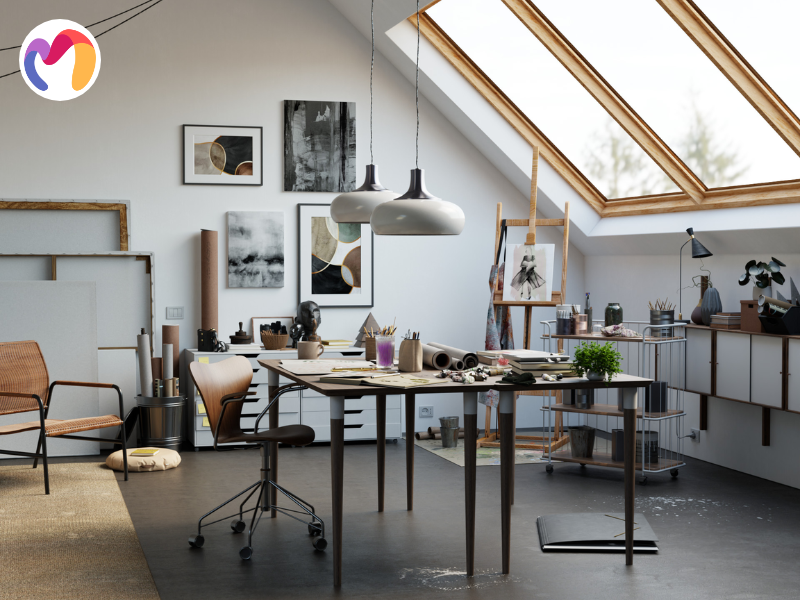
| Don’t start from scratch — download free 3D assets to speed up your workflow. | |||
  |
  |
  |
  |
| Office Furniture 3d model | Arm chair 3d model | Lighting 3d model | Chandelier 3d model |
2. What are the key components of PBR?
PBR systems rely on three main parts that work together to create realistic materials and natural light responses in computer graphics:
- Shaders: These small programs process geometry and handle how each pixel interacts with light. Vertex shaders manage shapes, while fragment shaders define surface details like color, reflection and highlights. Together, they turn math-based data into visuals that look real under different lighting.
- Rendering techniques: These use physics-based algorithms to combine shaders and texture maps, simulating how light interacts with surfaces. By doing so, they produce photorealistic images with correct colors, reflections and highlights, which are perfect for architectural and design visualization.
- Texture maps: These are image files that add surface details, such as roughness, gloss, or color. By defining material traits at the pixel level, texture maps let surfaces react differently under changing light conditions. Designers often use up to ten texture types to achieve accurate visual results.
There are ten texture types that combine to create comprehensive material definitions for architectural and design visualization projects.
- Albedo: Maps store pure diffuse base color values in RGB format, excluding lighting information to determine visible color under neutral illumination
- Normal: Vectors encode surface detail as RGB directions, simulating micro-geometry features without increasing mesh complexity for realistic surface variation.
- Roughness: Values define micro-surface smoothness using grayscale data, where black equals perfectly smooth and white represents fully rough matte finishes
- Metalness: Maps indicate metallic areas through binary classification affecting reflectivity and light interaction, with white representing metal and black non-metallic surfaces
- Specular: Reflections define intensity and color through RGB mapping, allowing varied reflectivity across surfaces in specular workflow implementations.
- Height: Data stores elevation information as grayscale values for parallax effects and physical mesh deformation in terrain and architectural elements
- Opacity: Maps control material transparency through grayscale classification, where black represents full transparency and white indicates complete opacity for glass effects
- Ambient Occlusion: Information stores precomputed shadowing data, darkening crevices and corners to simulate indirect light occlusion and enhance realistic depth perception
- Refraction: Properties encode distortion characteristics controlling light bending through transparent materials like glass and water for accurate optical simulation
- Emissive: Maps specify self-illumination color and intensity values, creating materials that emit light independent of scene lighting conditions.
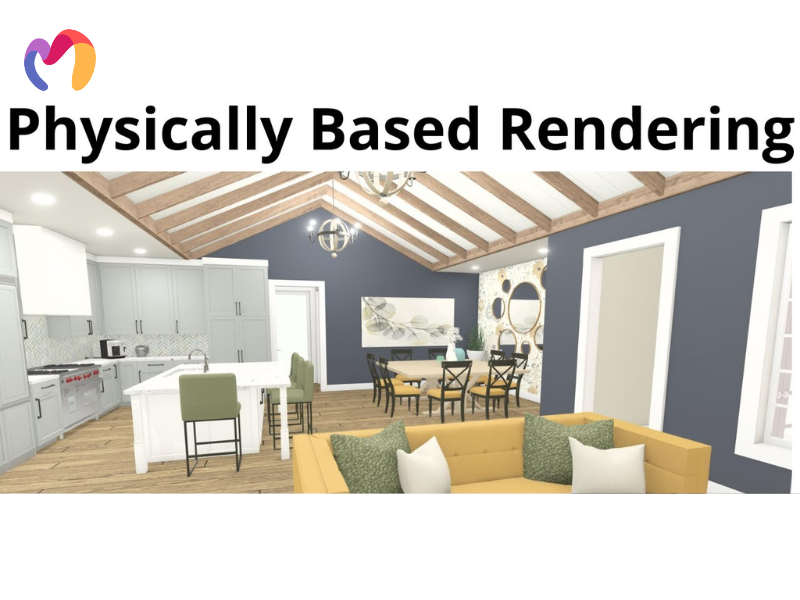

3. What are the principles of PBR?
The principles of Physically Based Rendering (PBR) come from the laws of physics that describe how light interacts with materials. They guide designers to create visuals that look natural and consistent. The four main principles include:
- Energy conservation: This rule makes sure that the light reflected from a surface never exceeds the light it receives. By doing so, it avoids unnatural brightness and keeps materials consistent across different surfaces and lighting setups.
- Fresnel effects: Surfaces reflect more light at shallow, or grazing, angles, no matter what material they are made of. This creates believable highlights and edge reflections, which are especially noticeable in glass, metals and fabrics.
- Albedo values: Albedo sets the base color of a material and controls how much light it reflects. For example, a standard white surface reflects about 70% of incoming light. If values are too high, they cause unrealistic bouncing effects, so accurate calibration is key.
- Reflection principles: Light sources interact with surfaces by creating highlights, glossy spots, or even refractions. Normal maps add fine surface details, while normal distribution functions simulate the way micro-surfaces scatter reflections, giving materials depth and realism.
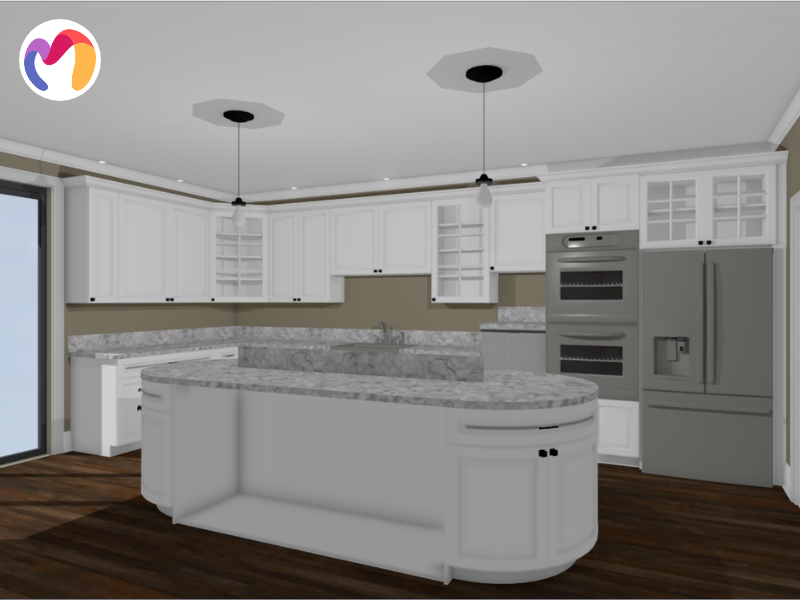

4. What is the PBR workflow?
The PBR workflow follows five steps that guide designers from model preparation to final rendering, helping create materials and lighting that feel lifelike and consistent:
- Step 1: Model balance: High-poly models capture fine details like carved textures or layered surfaces, while low-poly models are built for speed and real-time rendering. The balance between them creates a structure that looks convincing yet stays efficient. Artists use this balance to keep both detail and performance in harmony.
- Step 2: UV mapping: UV mapping unwraps a 3D model into a flat surface, giving a guide for placing textures such as albedo, metallic and roughness maps. Accurate mapping prevents distortions that might break realism, while also controlling how patterns align with the geometry. This makes texture placement precise and predictable.
- Step 3: Texture creation: Texture maps define the look and feel of materials by adding surface qualities. Albedo sets base color, normal maps add depth, metallic maps show reflectivity and roughness maps control shine. Together, they form the foundation of how materials behave under light, giving each object its unique presence.
- Step 4: Specular control: Specular reflections shape how surfaces catch and reflect light, creating sharp highlights on polished stone or soft glows on textiles. Proper adjustments make objects react naturally to light sources, giving depth to every material. Designers fine-tune these reflections to avoid flat surfaces and preserve authenticity.
- Step 5: Workflow refinement: Every step comes together in refinement, where textures, maps and reflections are adjusted into a cohesive whole. Attention to consistency keeps scenes visually unified, making light and materials interact convincingly. This refinement stage allows artists to deliver immersive visuals that highlight the strength of the PBR method.
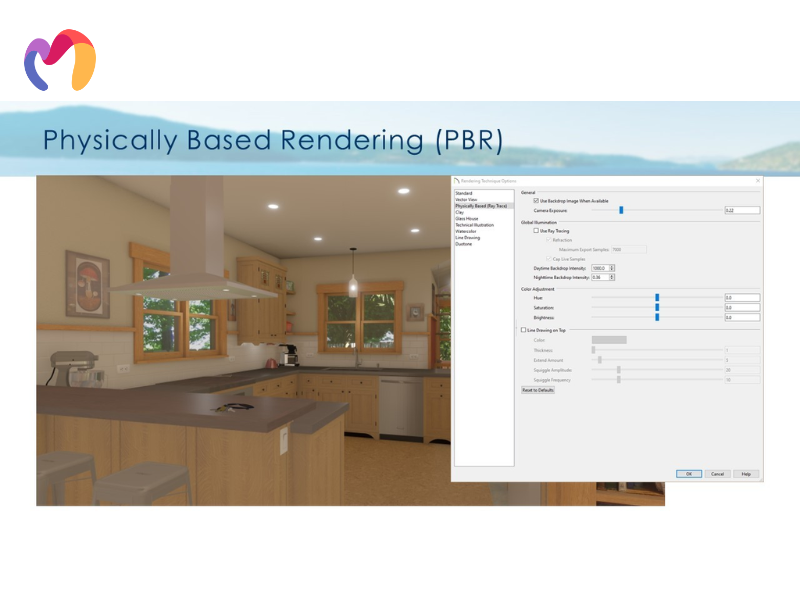

5. What are the benefits of PBR?
Physically Based Rendering (PBR) brings clear advantages to professional design workflows, helping improve project quality, streamline efficiency and elevate client presentations. Here are six key benefits:
- More realistic visuals: PBR allows the creation of lifelike images by accurately simulating optical effects such as reflection, refraction and diffuse lighting.
- Comprehensive material definition: It supports a wide range of properties including roughness, glossiness, metallic effects and self-illumination, enabling a complete representation of materials.
- Detailed surface texturing: Designers can capture fine details and subtle variations on surfaces, ensuring precision in architectural and interior specifications.
- Authentic lighting effects: Advanced algorithms replicate natural lighting behaviors, making design presentations more immersive and convincing.
- Cross-platform compatibility: PBR materials work seamlessly across multiple software platforms, making collaboration smoother and reducing project turnaround time.
- Industry-standard adoption: Most modern design software now includes PBR as a standard feature, making it an industry norm, though there may still be a learning curve for beginners.
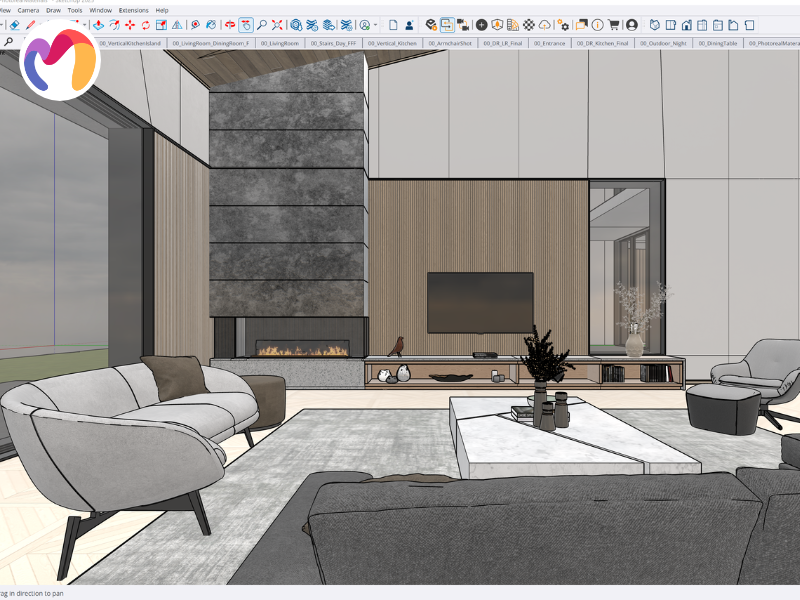

6. What are the applications of PBR?
Architects, interior designers and 3D artists across design sectors actively implement PBR technology for both interior and exterior visualization projects. Leading architectural visualization studios are adopting PBR workflows to create photorealistic presentations that engage clients and stakeholders with immersive project experiences. These professional environments depend on accurate material representation and lighting simulation for successful project communication.
Interior designers leverage PBR systems to preview materials, fabrics and lighting conditions across residential and commercial spaces, enabling clients to make informed design decisions based on realistic visualizations. Exterior designers and architects utilize PBR technology to visualize building facades, landscaping elements and environmental context under various lighting scenarios, thereby enhancing project accuracy and facilitating effective stakeholder communication.
Major software platforms supporting PBR include Blender, Autodesk 3ds Max, SketchUp with V-Ray, Unreal Engine, Lumion and Revit, providing comprehensive toolsets for professional design workflows. PBR integration is becoming increasingly standard across architectural practices, facilitating the creation of consistent and reusable visual assets that maintain quality standards across projects and platforms.
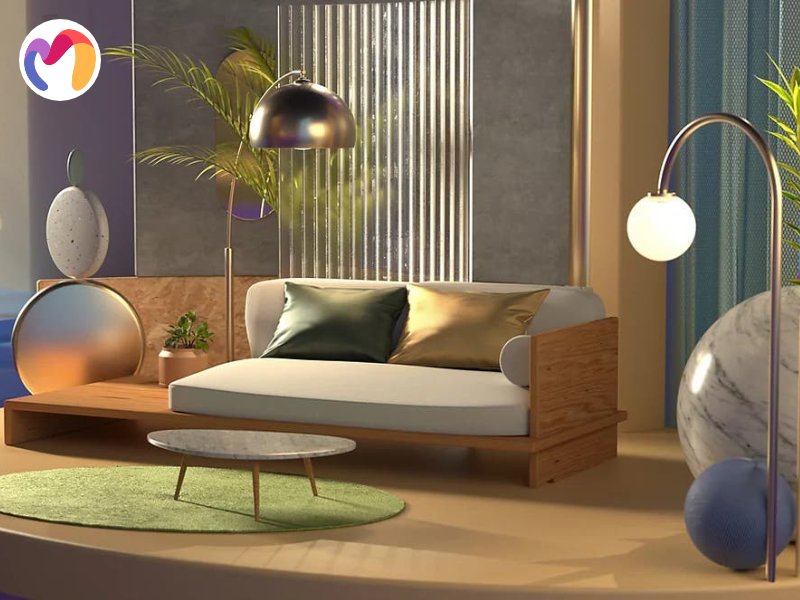

7. Frequently Asked Questions about PBR
- Who uses PBR?
PBR is used in gaming, film, architecture, product design and VR for creating realistic visuals.
- How is the PBR workflow different from traditional rendering?
PBR uses standardized material inputs like albedo, metallic and roughness maps, ensuring consistency across lighting setups. Traditional methods rely on manual adjustments.
- What are the key components of PBR materials?
Albedo defines color, metallic sets reflective properties, roughness controls light scattering and normal maps add detail without increasing geometry. These elements ensure realistic renders.
8. Conclusion
This guide explained what is PBR, outlining its meaning, core elements and practical use in architectural rendering, interior styling and exterior design. Readers gained clear insights into texture maps, material behavior, lighting systems and workflow methods that make projects look photorealistic and consistent. 3DMAXTER strengthens these workflows with precision 3D assets featuring detailed, fairly priced models crafted for architectural and interior visualization, giving designers reliable resources for faster, smoother and more realistic project outcomes. Download professional models today to build visuals that merge science-based accuracy with artistic presentation.
3DMAXTER
- Email: [email protected]
- Phone: +1 (929) 450-2898
- Address: 95-38 Queens Blvd, Rego Park, NY 11374, USA
